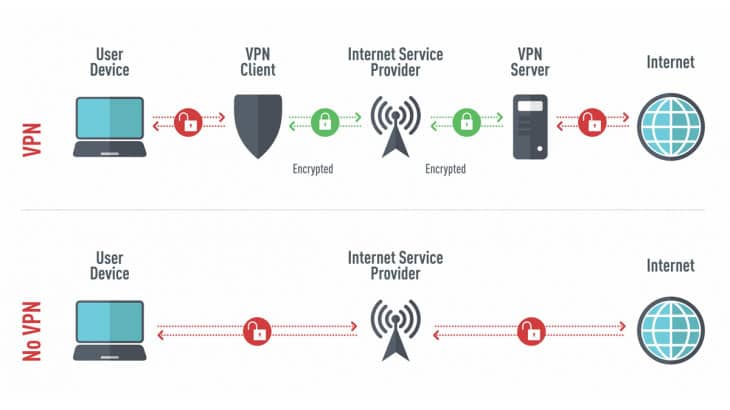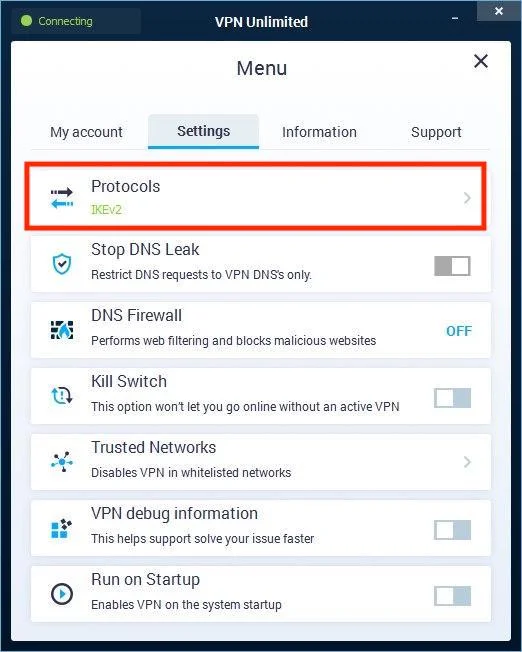Featured
Table of Contents
What Is Wireguard?
It is currently under heavy development, but currently it may be concerned as the most safe and secure, most convenient to use, and simplest VPN solution in the market. Wire, Guard aims to be as simple to configure and deploy as SSH. A VPN connection is made merely by exchanging very simple public secrets exactly like exchanging SSH secrets and all the rest is transparently handled by Wire, Guard.
There is no requirement to manage connections, be concerned about state, handle daemons, or fret about what's under the hood. Wire, Guard provides an exceptionally basic yet effective user interface. Wire, Guard has actually been developed with ease-of-implementation and simplicity in mind. It is meant to be easily carried out in very few lines of code, and quickly auditable for security vulnerabilities. what is wireguard protocol and how does it work?.
You then may advance to setup and reading the quickstart instructions on how to utilize it. If you have an interest in the internal inner operations, you may be interested in the brief summary of the procedure, or go more in depth by reading the technical whitepaper, which enters into more detail on the protocol, cryptography, and fundamentals.

This user interface serves as a tunnel user interface. Wire, Guard associates tunnel IP addresses with public keys and remote endpoints. When the interface sends out a packet to a peer, it does the following: This package is indicated for 192. 168.30. 8. Which peer is that? Let me look ... Okay, it's for peer ABCDEFGH.
Wireguard
If not, drop it. Behind the scenes there is much taking place to supply proper privacy, credibility, and ideal forward secrecy, using advanced cryptography. At the heart of Wire, Guard is a principle called Cryptokey Routing, which works by associating public keys with a list of tunnel IP addresses that are allowed inside the tunnel (what is wireguard protocol and how does it work?).

Each peer has a public secret. Public secrets are brief and simple, and are used by peers to validate each other. They can be passed around for use in configuration files by any out-of-band technique, similar to how one might send their SSH public key to a buddy for access to a shell server.
69:51820 Allowed, IPs = 0. 0.0. 0/0 In the server configuration, each peer (a customer) will be able to send out packets to the network interface with a source IP matching his corresponding list of enabled IPs. When a package is gotten by the server from peer g, N65Bk, IK ..., after being decrypted and authenticated, if its source IP is 10.
230, then it's allowed onto the user interface; otherwise it's dropped. In the server configuration, when the network interface wishes to send out a packet to a peer (a client), it looks at that packet's destination IP and compares it to each peer's list of enabled IPs to see which peer to send it to - what is wireguard protocol and how does it work?.
Wireguard: The Next-gen Vpn Protocol

10.10. 230, it will secure it utilizing the general public secret of peer g, N65Bk, IK ..., and after that send it to that peer's most recent Internet endpoint. In the client setup, its single peer (the server) will be able to send packets to the network user interface with any source IP (because 0.
0/0 is a wildcard). When a package is gotten from peer HIgo9x, Nz ..., if it decrypts and confirms properly, with any source IP, then it's permitted onto the user interface; otherwise it's dropped. In the customer setup, when the network interface desires to send out a package to its single peer (the server), it will encrypt packages for the single peer with any destination IP address (since 0.
0/0 is a wildcard). If the network user interface is asked to send out a package with any location IP, it will secure it utilizing the public key of the single peer HIgo9x, Nz ..., and then send it to the single peer's most current Web endpoint. To put it simply, when sending out packets, the list of enabled IPs acts as a sort of routing table, and when receiving packets, the list of permitted IPs acts as a sort of access control list.
Any mix of IPv4 and IPv6 can be utilized, for any of the fields. Wire, Guard is fully capable of encapsulating one inside the other if essential. Because all packets sent out on the Wire, Guard user interface are encrypted and authenticated, and due to the fact that there is such a tight coupling in between the identity of a peer and the allowed IP address of a peer, system administrators do not need complicated firewall extensions, such as when it comes to IPsec, but rather they can simply match on "is it from this IP? on this interface?", and be guaranteed that it is a safe and authentic package.
What Is Nordlynx And How Does It Work? [Full Explanation]
The customer setup includes an initial endpoint of its single peer (the server), so that it understands where to send encrypted data prior to it has received encrypted information. The server setup does not have any initial endpoints of its peers (the clients). This is because the server discovers the endpoint of its peers by taking a look at from where correctly verified information stems.
We likewise talk about development jobs there and plan the future of the project.

Do not send non-security-related issues to this e-mail alias. Do not send out security-related issues to various e-mail addresses.
Wire, Guard is much faster than Open, VPN. It takes in 15% less information, manages network changes much better, and appears to be safe. Open, VPN has been tried and tested, is more privacy-friendly, and is supported by a larger number of VPNs.
Wireguard Vpn Protocol Is Fast. But Is It Good For Your ...
We may get compensation from the items and services discussed in this story, but the opinions are the author's own. We have actually not included all readily available items or offers. (VPNs) have taken off, getting appeal with those looking for extra security, privacy, and versatility.
In this article Wire, Guard is a brand-new, open-source VPN protocol created with modern cryptography, which is the practice of coding delicate information so just the intended receivers can interpret its meaning. It offers quicker, easier-to-use, and more protected pathways for user gadgets to get in touch with VPN servers worldwide. Developer Jason A.
Dealing With Wire, Guard couldn't be easier. Users begin by finding the Wire, Guard application in an online store, then follow easy download and installation steps. The Wire, Guard app is offered for desktop and mobile devices for included benefit. Wire, Guard keeps it basic by running with fewer than 4,000 lines of code compared to older VPN procedures that typically utilize thousands more.
Latest Posts
What Is A Business Vpn? Understand Its Uses And ...
5 Best Business Vpns In 2023 - Most Secure And Reliable
Best Business Vpn Options In 2023 [Keeping Smb Data ...